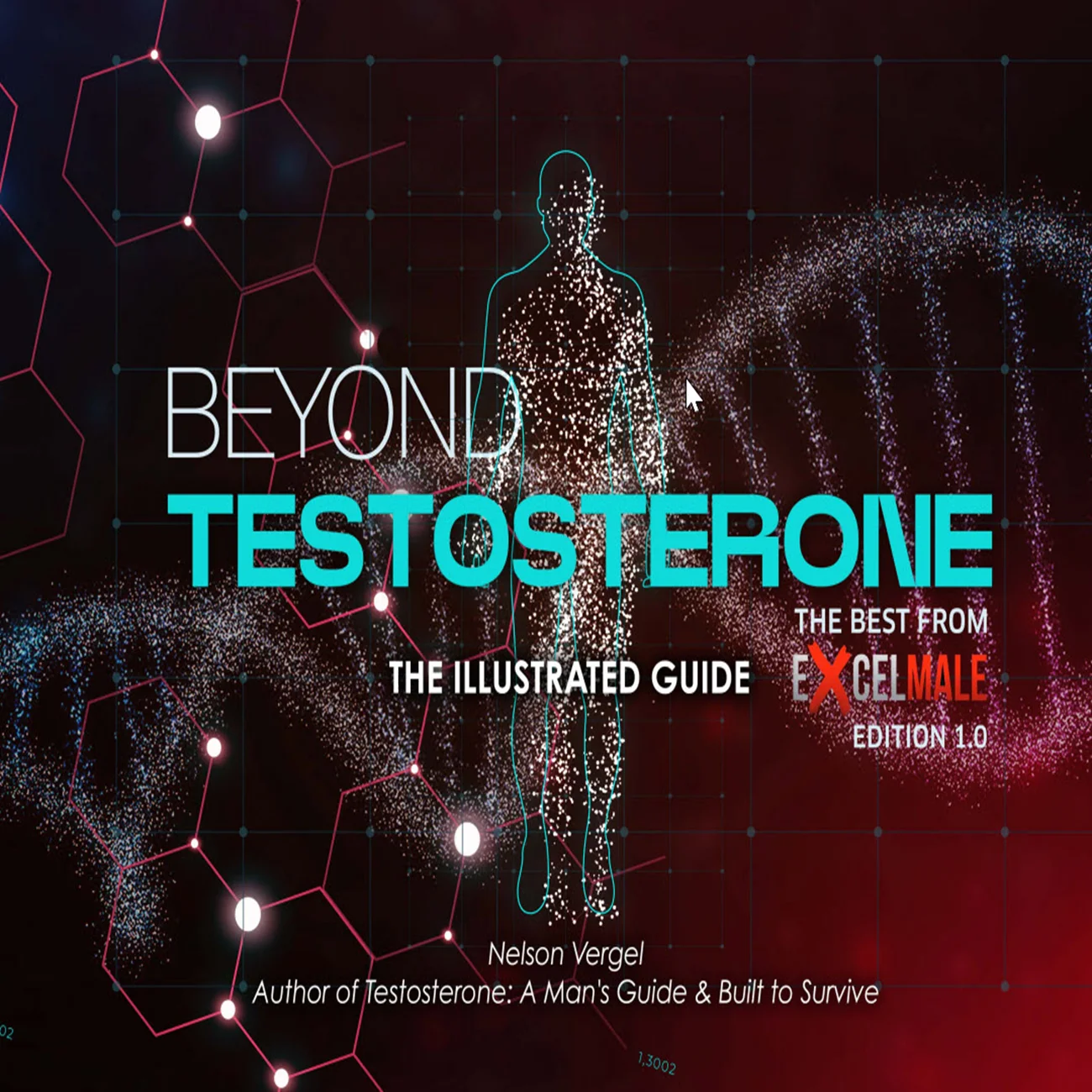The one cited study was a very small one in which young men not on TRT were given 1mg./day of anastrazole, a dose 10 or 20 times that which competent TRT doctors are prescribing to their patients. Even at this very large dose, as noted in the study, "[t]here were no significant changes in lipoproteins, testosterone, DHEA, CRP, or homocysteine levels in either the anastrozole or placebo group." The decrease noted in flow-mediated dilation in the brachial artery appears to only have just reached statistical significance. It also does not demonstrate that any differences between the participants were due to the drug itself, rather than lower e2 levels. Don't know how such a study could even be designed.Here is one valid on MEN
https://www.ahajournals.org/doi/full/10.1161/01.RES.0000115311.56442.A6#
https://www.ahajournals.org/doi/10.1161/01.res.0000103633.57225.bc
So, I know on myself also that ONLY 0.25 mg decrease HDL and increase LDL, why would I lose even 1% of protective effect of e2 while I can avoid AIs using different methods.
If you wan't to sacrifice your health , then use it... But, people here need to know facts, that AIs are not good longterm and this has nothing to do with e2 levels, but with using of this particular drug
You are using an out of date browser. It may not display this or other websites correctly.
You should upgrade or use an alternative browser.
You should upgrade or use an alternative browser.
Ditch your AI now - you don't need it!
- Status
- Not open for further replies.
DragonBits
Well-Known Member
The one cited study was a very small one in which young men not on TRT were given 1mg./day of anastrazole, a dose 10 or 20 times that which competent TRT doctors are prescribing to their patients. Even at this very large dose, as noted in the study, "[t]here were no significant changes in lipoproteins, testosterone, DHEA, CRP, or homocysteine levels in either the anastrozole or placebo group." The decrease noted in flow-mediated dilation in the brachial artery appears to only have just reached statistical significance. It also does not demonstrate that any differences between the participants were due to the drug itself, rather than lower e2 levels. Don't know how such a study could even be designed.
This maybe obvious, but it isn't to me.
The test said " The anastrozole group (n=9) received 1 mg anastrozole for 6 weeks. "
They don't say if they were dosed daily 1 mg or 1 mg a week?
The reason I ask, their E2 declined. "There was a significant decrease in 17β-estradiol concentrations with aromatase inhibition, from 85.4±4.2 to 64.3±8.1 pmol/L (mean±SD, P=0.042). "
So E2 declined from 23 pg/ml > 17.44 pg/ml? That doesn't seem like a huge decline if they were given 1 mg a day, but 1 mg a week is more plausible.
As to designing a study, dose both anastrozole and exogenous estrogen. The anastrozole should only inhibit the aromatase conversion and not affect exogenous estrogen.
Perhaps, although I would presume 1mg./day unless otherwise stated (it wasn't). Even 1mg./week is still quite a bit more than typically prescribed by most competent TRT clinicians.This maybe obvious, but it isn't to me.
The test said " The anastrozole group (n=9) received 1 mg anastrozole for 6 weeks. "
They don't say if they were dosed daily 1 mg or 1 mg a week?
The reason I ask, their E2 declined. "There was a significant decrease in 17β-estradiol concentrations with aromatase inhibition, from 85.4±4.2 to 64.3±8.1 pmol/L (mean±SD, P=0.042). "
So E2 declined from 23 pg/ml > 17.44 pg/ml? That doesn't seem like a huge decline if they were given 1 mg a day, but 1 mg a week is more plausible.
As to designing a study, dose both anastrozole and exogenous estrogen. The anastrozole should only inhibit the aromatase conversion and not affect exogenous estrogen.
Again, the only effect that even managed to achieve statistical significance (meaning it crossed the threshold of perhaps being more than statistical noise) was flow-mediated dilation in the brachial artery, nothing else. Query whether that would be reproducible in other larger studies.
And anastrazole plus estrogen tells you what are the effects of two drugs, not what are the effects of anastrazole independent of estrogen lowering.
FWIW, at least one TRT clinician who members of this forum hold in highest esteem has in consultation with me expressed the view that whatever negative effects are seen from anastrazole therapy are solely attributable to lowering estrogen too far and not from the drug per se.
DragonBits
Well-Known Member
Perhaps, although I would presume 1mg./day unless otherwise stated (it wasn't). Even 1mg./week is still quite a bit more than typically prescribed by most competent TRT clinicians.
Again, the only effect that even managed to achieve statistical significance (meaning it crossed the threshold of perhaps being more than statistical noise) was flow-mediated dilation in the brachial artery, nothing else. Query whether that would be reproducible in other larger studies.
And anastrazole plus estrogen tells you what are the effects of two drugs, not what are the effects of anastrazole independent of estrogen lowering.
FWIW, at least one TRT clinician who members of this forum hold in highest esteem has in consultation with me expressed the view that whatever negative effects are seen from anastrazole therapy are solely attributable to lowering estrogen too far and not from the drug per se.
IMO the study didn't go on long enough to really see any serious changes. I think it takes longer to see negative effects of lower E2. It it went on longer, flow-mediated dilation in the brachial artery might have been much more serious and other problems might have surfaced. (Though E2 wasn't all that low.)
I also wonder if the ratio of T/E2 and other hormones plays any significance in how men react to lower E2. Maybe high T with low E2 creates more of a problem Vs low T and low E2.
We know many of the positive effects of TRT can take over a year to see.
But I agree, it's my feeling problems with anastrazole are related to lowering estrogen too far rather than anything else the drug is doing.
Here is one valid on MEN
https://www.ahajournals.org/doi/full/10.1161/01.RES.0000115311.56442.A6#
https://www.ahajournals.org/doi/10.1161/01.res.0000103633.57225.bc
So, I know on myself also that ONLY 0.25 mg decrease HDL and increase LDL, why would I lose even 1% of protective effect of e2 while I can avoid AIs using different methods.
If you wan't to sacrifice your health , then use it... But, people here need to know facts, that AIs are not good longterm and this has nothing to do with e2 levels, but with using of this particular drug
You repeatedly claim that AI use causes lower hdl and higher ldl yet the study you reference states that AI use had no effects on the lipid levels.
Quoting from your link:
Effect of Anastrozole on Lipid Levels
Lipoprotein levels (total cholesterol, HDL, LDL, and triglycerides) at baseline were in the low range for the general population. There were no significant changes in the total cholesterol, HDL, LDL, and triglyceride levels with anastrozole (Table 2).
Airborne Warrior
Active Member
All truth passes through three stages. First, it is ridiculed. Second, it is violently opposed. Third, it is accepted as being self-evident.
Wonder what stage this AI thing is in?
Did you just make that up?
Did you just make that up?
Haha no he didn’t. It’s a common quote. A quote I agree with btw.
Airborne Warrior
Active Member
Oh lol. Tis a good quote.
This thread is now seven pages long without even a single reference that actually supports the claim that AI is supposedly toxic and damaging to health.
Thus this claim has not made it to even the initial phase of validation as being true, except for those who follow blindly the baseless claims made in the tot roundtable and regard them as divine truth...
Thus this claim has not made it to even the initial phase of validation as being true, except for those who follow blindly the baseless claims made in the tot roundtable and regard them as divine truth...
Last edited:
I feel that there are some conspiracy theorists here. I mention that AI's are toxic to biological systems (and I said that because the majority of studies have been done on rats so I specifically avoided saying 'humans'), and because someone else online used the same phrase you have concluded that I'm parroting him. I could say that, with every word you use, you are parroting others. That is the nature of language.
Please read this entire study and then tell me if you still want to use an AI:
Testosterone inhibits early atherogenesis by conversion to estradiol: Critical role of aromatase
In simple English, what the study is saying is as follows:
1) The role of aromatase is CRITICAL to our health.
2) Arimidex INCREASED lesion formation in the aortic origin.
3) Exogenous administration of estrogen DECREASED these lesions.
What does this mean? As per this study, testosterone is very good for you. Estrogen is cardio protective. Arimidex has a toxicity that will cause lesions in your body.
Now, please, if you are all for having lesions in your body, keep taking the stuff. Seriously. Knock yourself out.
If this isn't sufficient evidence then I don't know what else to tell you.
Please read this entire study and then tell me if you still want to use an AI:
Testosterone inhibits early atherogenesis by conversion to estradiol: Critical role of aromatase
In simple English, what the study is saying is as follows:
1) The role of aromatase is CRITICAL to our health.
2) Arimidex INCREASED lesion formation in the aortic origin.
3) Exogenous administration of estrogen DECREASED these lesions.
What does this mean? As per this study, testosterone is very good for you. Estrogen is cardio protective. Arimidex has a toxicity that will cause lesions in your body.
Now, please, if you are all for having lesions in your body, keep taking the stuff. Seriously. Knock yourself out.
If this isn't sufficient evidence then I don't know what else to tell you.
Sean Mosher
Member
What was the amount and frequency of the AI used in that study?
Even the lowest dose of AI WILL decrease HDL, increase LDL, why would you want to do that (Long term ) ? You don't need any study for that, it's a fact.
But, you know what ? When you decrease your E2 by lowering your T levels or by losing FAT, you don't see ANY hdl decrease.
Just use common sense that AIs are toxic and that has nothing to do with e2 level
But, you know what ? When you decrease your E2 by lowering your T levels or by losing FAT, you don't see ANY hdl decrease.
Just use common sense that AIs are toxic and that has nothing to do with e2 level
Sean Mosher
Member
Not that I disagree (not an AI user myself), but how on earth would we know it's a fact if someone didn't study it...................?
In every study with an AI in men and women, lipids gets worse....Not that I disagree (not an AI user myself), but how on earth would we know it's a fact if someone didn't study it...................?
On lower doses of it, lipids get less worse, by they do anyway.
Why don't you test your patients or yourself with and without it ? YOu will see drastic difference.
I saw it on myself on only 0.25 2x week.
My e2 never went bellow 20 on an AI, but I felt like shit, lost libido and lipids like I sad above.
Maybe there are rare cases that needs it, but IT'S OVER PRESCRIBED right now "if it's not in range" regardles of symptoms, they give you an AI, which is a nonsense.....
In every study with an AI in men and women, lipids gets worse....
On lower doses of it, lipids get less worse, by they do anyway.
Why don't you test your patients or yourself with and without it ? YOu will see drastic difference.
I saw it on myself on only 0.25 2x week.
My e2 never went bellow 20 on an AI, but I felt like shit, lost libido and lipids like I sad above.
Maybe there are rare cases that needs it, but IT'S OVER PRESCRIBED right now "if it's not in range" regardles of symptoms, they give you an AI, which is a nonsense.....
What is your SHBG usually around? Just curious.
DragonBits
Well-Known Member
Interesting, at least in rats an AI made their HDL go up a little while decreasing tot Chol, though they didn't find the increase significant.
Treatment Chol, mg/dl HDL-Chol, mg/dl Triglycerides, mg/dl
TI 1,448 ± 46 98 ± 6 297 ± 34
TI + A 1,276 ± 37 117 ± 6 267 ± 22
Orch + P 1,677 ± 125 64 ± 4* 250 ± 26
Orch + T 1,290 ± 54** 64 ± 10* 247 ± 19
Orch + T + A 1,405 ± 85** 81 ± 11 300 ± 33
Orch + E2 1,188 ± 152** 89 ± 10**,*** 122 ± 16*,**,***
"In TI mice given the aromatase inhibitor, HDL levels were similar to those in TI animals given vehicle, despite greater lesion formation in the animals receiving the aromatase inhibitor (Table (Table2).2) "
Also interesting, in castrated rats with no T, giving them E2 caused them to have no extra aortic lesions. Implying it's only the lack of E2 that causes a problem and not the Arimidex itself, only the effect of lowering E2.

"The aromatase inhibitor did not accentuate atherogenesis itself as in oophorectomized female LDLR−/−mice, E2 supplementation, when given alone or in combination with the aromatase inhibitor, inhibited atherogenesis to the same extent (L.N., unpublished observations). "
This seems to support AI as being non-toxic while lowering E2 too much is the problem.
Thanks for the study!
Treatment Chol, mg/dl HDL-Chol, mg/dl Triglycerides, mg/dl
TI 1,448 ± 46 98 ± 6 297 ± 34
TI + A 1,276 ± 37 117 ± 6 267 ± 22
Orch + P 1,677 ± 125 64 ± 4* 250 ± 26
Orch + T 1,290 ± 54** 64 ± 10* 247 ± 19
Orch + T + A 1,405 ± 85** 81 ± 11 300 ± 33
Orch + E2 1,188 ± 152** 89 ± 10**,*** 122 ± 16*,**,***
"In TI mice given the aromatase inhibitor, HDL levels were similar to those in TI animals given vehicle, despite greater lesion formation in the animals receiving the aromatase inhibitor (Table (Table2).2) "
Also interesting, in castrated rats with no T, giving them E2 caused them to have no extra aortic lesions. Implying it's only the lack of E2 that causes a problem and not the Arimidex itself, only the effect of lowering E2.
"The aromatase inhibitor did not accentuate atherogenesis itself as in oophorectomized female LDLR−/−mice, E2 supplementation, when given alone or in combination with the aromatase inhibitor, inhibited atherogenesis to the same extent (L.N., unpublished observations). "
This seems to support AI as being non-toxic while lowering E2 too much is the problem.
Thanks for the study!
18-20.What is your SHBG usually around? Just curious.
I inject every day 20mg of T
Please read this entire study and then tell me if you still want to use an AI:
Testosterone inhibits early atherogenesis by conversion to estradiol: Critical role of aromatase
In simple English, what the study is saying is as follows:
1) The role of aromatase is CRITICAL to our health.
2) Arimidex INCREASED lesion formation in the aortic origin.
3) Exogenous administration of estrogen DECREASED these lesions.
What does this mean? As per this study, testosterone is very good for you. Estrogen is cardio protective. Arimidex has a toxicity that will cause lesions in your body.
Now, please, if you are all for having lesions in your body, keep taking the stuff. Seriously. Knock yourself out.
If this isn't sufficient evidence then I don't know what else to tell you.
In simple English, your article DOES NOT support your claims that AI is toxic and you misunderstood the article completely. The article discusses the effect of elimination of E2 on mice and shows that entirely eliminating E2 in mice either by castration or by administering HUGE doses of AI will cause adverse effects.
We know that driving E2 dangerously low is bad for you, there's nothing new or debatable about that. However nowhere in that that study does does it state nor propose that AI is toxic.
In order to eliminate E2 the researchers used 10mg/Kg/day of Anastrazole, which is equivalent to daily doses of 800mg Anastrazole per day for a man who weighs 80Kg=176lbs. 800mg Anastrazole per day is 6,400 times the daily dosage of 0.125mg that is often used with men on TRT in order to keep E2 in the healthy range, not to eliminate it.
Please put more effort into understanding what you are reading before promoting false information.
Last edited:
- Status
- Not open for further replies.
hCG Mixing Calculator
HCG Mixing Protocol Calculator
Similar threads
- Replies
- 12
- Views
- 2K
- Replies
- 11
- Views
- 3K
- Replies
- 61
- Views
- 12K
C
- Replies
- 24
- Views
- 7K
TRT Hormone Predictor
Predict estradiol, DHT, and free testosterone levels based on total testosterone
⚠️ Medical Disclaimer
This tool provides predictions based on statistical models and should NOT replace professional medical advice. Always consult with your healthcare provider before making any changes to your TRT protocol.
ℹ️ Input Parameters
Normal range: 300-1000 ng/dL
Predicted Hormone Levels
Enter your total testosterone value to see predictions
Results will appear here after calculation
Understanding Your Hormones
Estradiol (E2)
A form of estrogen produced from testosterone. Important for bone health, mood, and libido. Too high can cause side effects; too low can affect well-being.
DHT
Dihydrotestosterone is a potent androgen derived from testosterone. Affects hair growth, prostate health, and masculinization effects.
Free Testosterone
The biologically active form of testosterone not bound to proteins. Directly available for cellular uptake and biological effects.
Scientific Reference
Lakshman KM, Kaplan B, Travison TG, Basaria S, Knapp PE, Singh AB, LaValley MP, Mazer NA, Bhasin S. The effects of injected testosterone dose and age on the conversion of testosterone to estradiol and dihydrotestosterone in young and older men. J Clin Endocrinol Metab. 2010 Aug;95(8):3955-64.
DOI: 10.1210/jc.2010-0102 | PMID: 20534765 | PMCID: PMC2913038
Online statistics
- Members online
- 1
- Guests online
- 236
- Total visitors
- 237
Totals may include hidden visitors.












